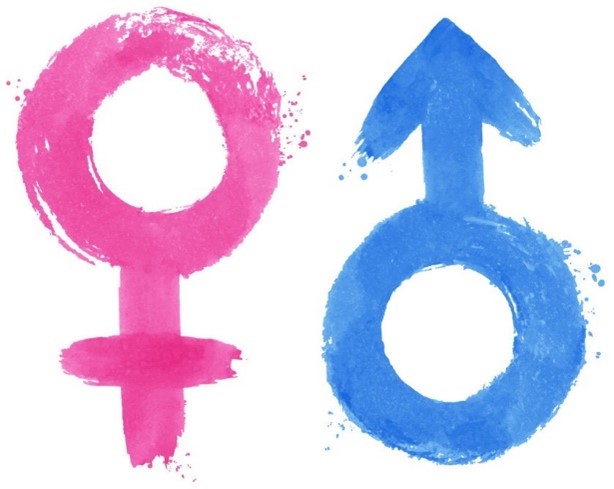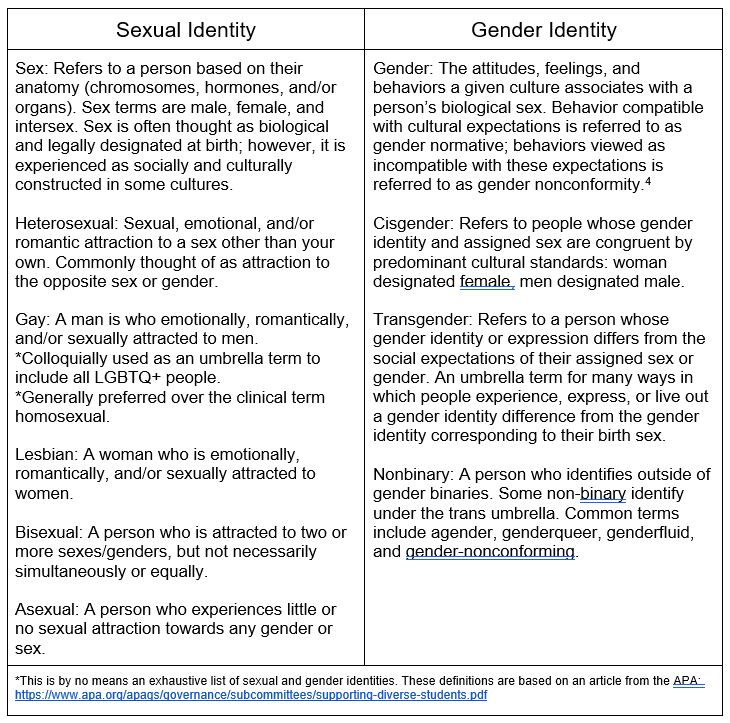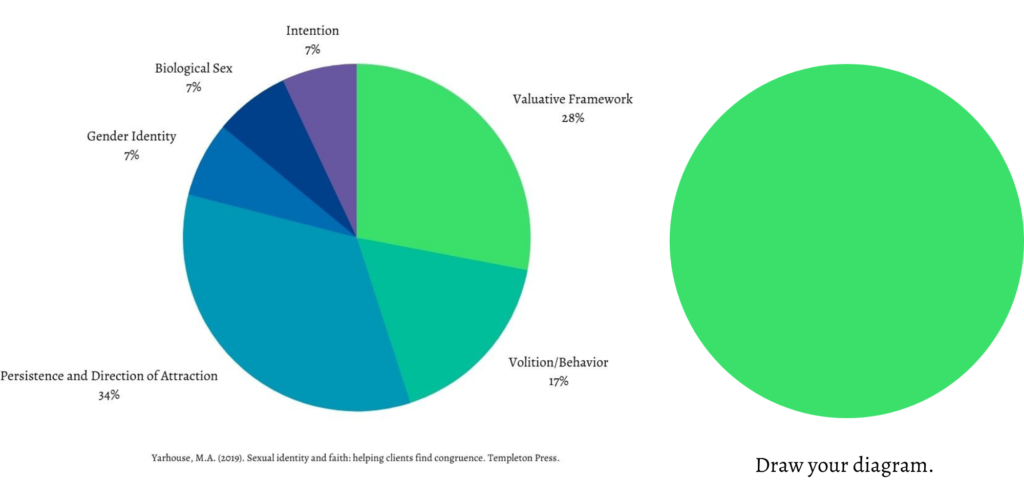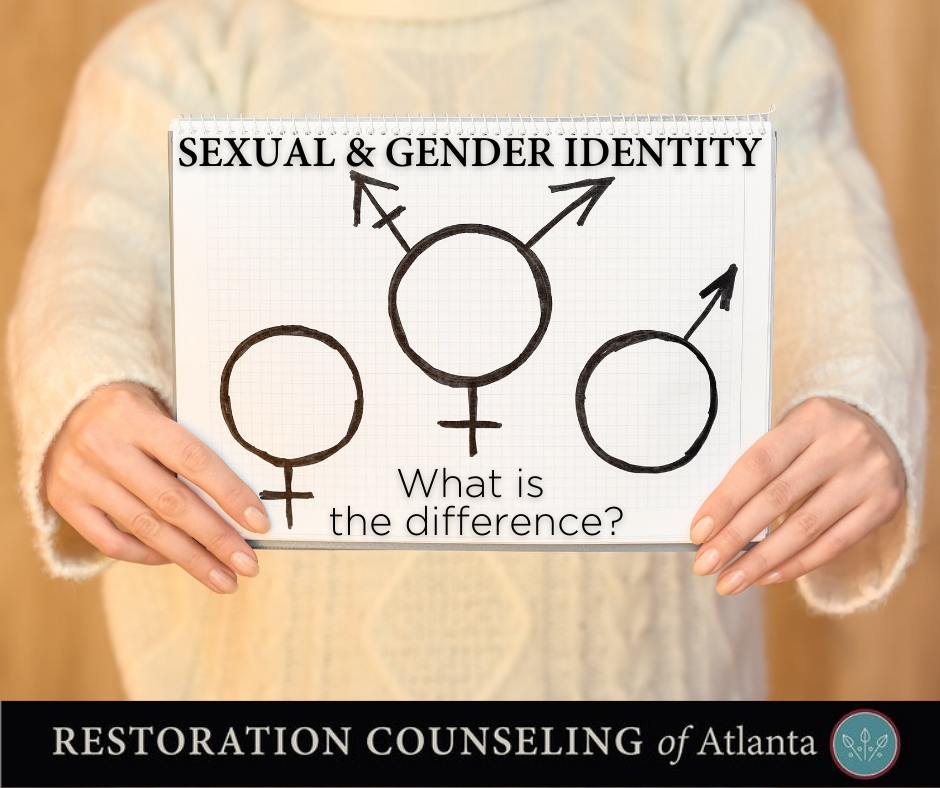Sexual or Gender Identity: What’s the difference?
Tyler is a 19-year-old natal male and is beginning his sophomore year of undergraduate school at a well-known Christian college. He notices that he is attracted to other males and not females. If he is being honest, he has known about his same-sex attraction for a while. Most of his friends are attracted to the opposite sex. Tyler wonders if because he is attracted to guys if God still loves him? He also wonders about his future. Will he ever get married? What will his family think?
 Kristen is a 16-year-old natal female in her junior year of high school. All her friends know her as Kris and he/him/they pronouns. Kris has always related to guys more – he preferred the male role in pretend play when he was younger and has always preferred playing sports instead of talking or playing with Barbies. Kris has also always had a deep dislike of his female body. At age 12, when his breasts began to develop more, Kris began wearing a binder and wearing baggier clothing. Kris would like his parents to call her Kris and use he/him pronouns, but they tell him no because God created him as a girl.
Kristen is a 16-year-old natal female in her junior year of high school. All her friends know her as Kris and he/him/they pronouns. Kris has always related to guys more – he preferred the male role in pretend play when he was younger and has always preferred playing sports instead of talking or playing with Barbies. Kris has also always had a deep dislike of his female body. At age 12, when his breasts began to develop more, Kris began wearing a binder and wearing baggier clothing. Kris would like his parents to call her Kris and use he/him pronouns, but they tell him no because God created him as a girl.
Questions for the reader:
- What are the differences between Tyler and Kris’s stories?
- Do you see any similarities?
- What labels would you use to describe Tyler and Kris’s experiences?
Tyler is navigating concerns around his sexual identity and Kris is navigating concerns around his gender identity. Sexual identity refers to a person’s sexual and emotional attraction to another person and the behavior and/or social affiliation that may occur from this attraction.[1] Gender identity refers to how a person experiences or thinks of themselves as male or female, including how masculine or feminine a person feels.[2] A recent (2020) Gallup poll, with over 15,000 participants, found that in the United States roughly 3.1% of the population identifies as bisexual, 1.4% as gay, 0.7% as lesbian, and 0.6% as transgender.[3] Tyler and Kris’s experiences make up a small percentage of the population and learning and listening about this population’s diverse experiences is important.
Labels or Identities
Below is a list of labels or identities a person may use to describe their sexual or gender identity.

Do the labels always fit?
Using the above list Tyler may identify as gay to describe his experience, but this is not guaranteed as he is still asking questions and making meaning of his experience (*See future article for more information). Kris may identify as transgender or maybe genderfluid; it would depend on his experience and what he thought fit.
Adolescence is a formative time of identity formation in every person’s life. Questions and concerns are accompanied by constant transition and change biologically and psychologically, and adolescents are up against constant pressure to be good, accomplished, and/or successful. Kris and Tyler’s experiences differ as they are asking questions about two different aspects of their identity.
Other Identity Aspects to Consider
Gender identity and sexual identity are just two aspects of a person’s identity. There are other aspects of a person’s identity that may or may not affect a person’s sexual or gender identity. This might include
- intentions (how a person intends to act, the kind of person one intends to become),
- values (one’s beliefs and values about sexual behavior and gender),
- behavior (what one does with the intentions one has),
- and the persistence or direction of attraction or gender.[5]
A note on persistence: a person’s attractions and a person’s gender often occur on a spectrum. For example, a natal female who identifies as cisgender but has some masculine qualities might mark herself on the first spectrum shown below. A natal male who is attracted to females but has occasionally been attracted to other males might mark himself on the second spectrum shown below. Where would you mark your gender and attraction?

Below is a diagram of different aspects of a person’s identity. What does your diagram look like? What other parts of your identity would you include?
 Individual Identity Conflict
Individual Identity Conflict
Sometimes the different aspects of a person’s identity conflict with one another. As a result, this can create internal and external tension, as it appears it has for Tyler and Kris in similar, yet distinct ways. Depending on the degree of conflict significant amounts of distress can be experienced, and it is important to seek help and support when needed.
There are many diverse gender and sexual experiences. Coming alongside people as they navigate these complex aspects of their identity is a part of what I do as a therapist at Restoration Counseling. If you have questions or would like someone to join you on your journey, please feel free to contact me by email or phone to schedule a phone consultation or appointment.
Resources
[1] American Psychological Association. (2015a). Guidelines for psychological practice with transgender and gender-nonconforming people. American Psychologist, 70(9), 832–864. https://doi.org/10.1037/a0039906
[2] Yarhouse, M. A. (2015). Understanding gender dysphoria: Navigating transgender issues in a changing culture. IVP Academic, an imprint of InterVarsity Press.
[3] Jones, J. M. (2021, August 13). LGBT identification rises to 5.6% in latest U.S. estimate. Gallup.com. https://news.gallup.com/poll/329708/lgbt-identification-rises-latest-estimate.aspx.
[4] Key Terms and Concepts in Understanding Gender Diversity and Sexual Orientation Among Students. (2015). https://www.apa.org/pi/lgbt/programs/safe-supportive/lgbt/key-terms.pdf.
[5] Yarhouse, M. A. (2019). Sexual identity and faith: Helping clients find congruence. Templeton Press.
 Written by Ashley Lewis MA, APC
Written by Ashley Lewis MA, APC
Woodstock and Roswell
ashleylewis@restorationcounselingatl.com
Ashley works with adolescents and adults from all backgrounds and provides marriage and premarital counseling. Areas of focus include depression, anxiety, sexual and gender identity concerns, trauma, adoption, anger, and grief.

